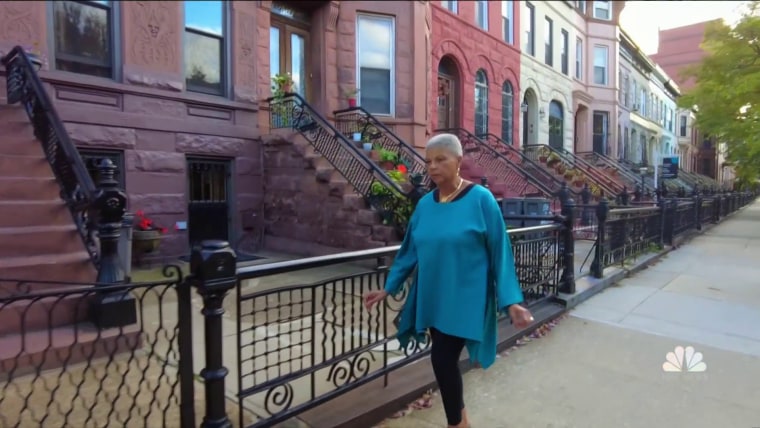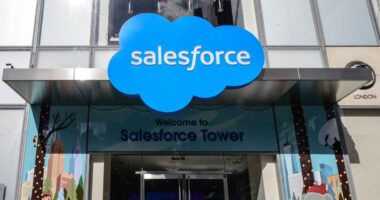Bank of America recently announced a new pilot mortgage program, Community Affordable Loan Solution, that will require no down payment, mortgage insurance or closing costs and will accept other ways of qualifying for mortgages beyond credit scores. While it’s for anyone who qualifies, regardless of race, the program is launching in predominantly Black and Hispanic zip codes and can be seen as an effort to close the racial homeownership gap.
For now, it will be available in Charlotte, Dallas, Detroit, Los Angeles and Miami.
This isn’t the first time national lenders have announced initiatives like this. And while the program will undoubtedly help some borrowers who qualify, America will not close its racial homeownership gap by tweaking mortgage product offerings. If it were that simple, we would have closed it by now. Instead, the homeownership gap between Black and white households is just as wide today as it was when the Fair Housing Act became law in 1968.
Bank of America offers a helpful option, but what good is a mortgage product if the homebuying system is set up in a way that makes it hard for people who need this kind of program to access it?
Bank of America offers a helpful option, but what good is a mortgage product if the homebuying system is set up in a way that makes it hard for people who need this kind of program to access it?
We can close the racial homeownership gap, but it will require systemic changes to our home buying process; not just tinkering around the edges. Thinking holistically about the home buying process from start to finish and developing a more streamlined system that delivers critical information about that process to people who want to buy a home is vital.
In fact, if we don’t fix the system, new mortgage products like Bank of America’s will likely be underused. For example, requiring no down payment won’t help a would-be buyer if they can’t qualify for a mortgage because of credit or debt issues. And while I commend Bank of America for expanding how to evaluate a homebuyer’s credit history — by using factors like on-time rent, utility and phone bill payments — it’s important to know that it will not be used as a way to compensate for bad credit. It’s more of a method for borrowers who have been locked out of traditional forms of building credit (i.e., taking out credit cards or loans) to establish some sort of credit history.
Indeed, there is a difference between no credit and bad credit. And addressing the latter and making homeownership a reality — in a way that doesn’t reduce credit standards to the point that leads to bad outcomes for families and neighborhoods (remember 2008’s housing crisis?) — means teaching prospective buyers how to strategize to improve their credit.
In my 30 years of working with first-time homebuyers, I can’t count the number of people who were surprised to find out that, yes, they can buy a home (even if they have work to do to qualify for a mortgage). Many have been people of color. There are multiple reasons for this surprise, but a major one is that no one they knew has ever owned a home. Misconceptions can also get in the way. A common one is that you need at least a 20% down payment when many programs require much less.
Between the lack of representation of what is possible and false information, offering proper homebuyer education has become essential. And I’m not talking about the “check the box” homebuyer course lenders often require a week before closing. I’m talking about the kind of preparation that helps someone in the beginning stages of purchasing a home learn how to qualify for an affordable, safe mortgage. To Bank of America’s credit, it offers educational resources to help first-time buyers through the process. Still, much of it seems to lack the sort of interaction and clarity that I’ve seen make first-time buyers more knowledgeable and confident.
Beyond the issues that plague would-be homebuyers, our system is not set up to ensure the long-term success of homeowners. Foreclosure rates for Black and Hispanic households are disproportionately higher than for white households. While it won’t fix all of the overt discrimination and microaggressions that contribute to families of color losing their homes, part of the education process must prepare people to develop savings habits and manage household finances appropriately. That’s incredibly important because new homeowners who used to be renters are often unprepared for unexpected costs — like repairs that their landlord would have been responsible for. When the time comes, a homeowner needs sufficient savings or the ability to borrow for a needed repair. We should be teaching people how to develop these habits when they are motivated to buy a home, but such education is rarely integrated into the homebuying process.
Beyond the issues that plague would-be homebuyers, our system is not set up to ensure the long-term success of homeowners.
But there are other flaws in the system that have nothing to do with the homebuyer’s financial situation. For example, the vast majority of loan officers and realtors earn commissions based on home price and loan size. Imagine you’re a buyer who qualifies for a good mortgage (one with a fixed rate, an affordable interest rate and reasonable fees), but you can’t get a loan officer or realtor to help you because what you can afford is too low to get their attention. This is not uncommon, particularly when the housing and refinancing markets are really hot and realtors and loan officers are chasing the bigger sales. We can solve this problem by ensuring at least some home buying professionals earn salaries rather than commissions. Households shouldn’t be punished for staying within their means.
Fortunately, there are organizations out there that take a holistic approach to help families become homeowners. Community Development Financial Institutions, community development credit unions, and nonprofit organizations like the one I lead — Homewise — focus on serving underserved populations in a responsible way. But we need to greatly expand the capacity of this fledgling network focused on helping first-time homebuyers so that it can more effectively provide the services, support, and financing that these communities need.
There just simply isn’t a single, quick fix that will close the racial homeownership gap. The barriers homebuyers face are systemic, but they are often also specific to the buyer. That’s why we need to develop a unified system that helps homebuyers from start to finish. And we need policymakers at levels of government, philanthropy and national banks to invest in building such a system. It will take time and resources — and it won’t happen overnight. But as the old adage goes: The best time to plant a tree was 30 years ago. The second best time is now.
Source: | This article originally belongs to Nbcnews.com











